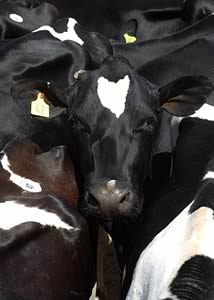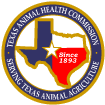| 2009-06-15
Cattle tuberculosis (TB) has been confirmed in a west Texas dairy that has been quarantined since April when some cattle in the herd responded to a TB test being conducted prior to a sale. (The sale was cancelled.)
The cattle TB diagnosis was confirmed at the National Veterinary Services Laboratory (NVSL) in Ames, Iowa, where M. bovis, or cattle TB bacteria, was grown or “cultured” from tissues that had been collected during the necropsy of the test-positive cattle.
“The infected herd remains quarantined while the final disposition of the herd is determined either slaughtering the herd, or repeatedly testing and removing infected animals until the herd is free of cattle TB,” said Dr. Bob Hillman, Texas’ state veterinarian and head of the Texas Animal Health Commission (TAHC), the state’s livestock and poultry health regulatory agency. “Dairy, calf-raising and dairy animal replacement operations with epidemiological links to the infected herd are being tested to determine both the origin and potential spread of the disease.”
“I encourage ranchers or accredited veterinarians to call the state of destination prior to shipping bison, beef or dairy cattle out of Texas,” said Dr. Hillman. “Some states may impose enhanced TB entry requirements on Texas cattle and bison. Keep in mind, too, that many states, like Texas, have implemented cattle trichomoniasis testing requirements, so call before you haul.”
Dr. Hillman said Texas’ cattle TB-free status with the U.S. Department of Agriculture (USDA) could be in jeopardy, if the infected dairy cannot be depopulated, or if a second infected herd is detected within 48 months.
Nebraska, in early June, confirmed TB infection in a beef herd. Currently, California and Minnesota are not cattle TB-free, and areas in Michigan and New Mexico have specified zones that are not TB-free. When TB-free status is lost, breeding cattle and bison moved out of a state need a negative TB test within 60 days prior to shipment, or animals must originate from a herd that has accredited TB-free status, achieved through a formal testing and retesting program.
Texas initially gained TB-free status in November 2000, when all counties except El Paso and portions of Hudspeth Counties were declared free of the disease. (The El Paso Milk Shed had a history of recurring infection, and eventually, the dairies were depopulated. Dairies no longer operate in this area along the U.S.-Mexican border near El Paso.)
In June 2002, Texas lost TB-free status after infection was detected in a beef herd and in an operation with both beef and dairy cattle. To regain TB-free status, 2,014 Texas purebred beef herds and the state’s 818 dairies were tested for the disease from October 2003 through August 2006. One TB-infected dairy was detected and depopulated. In September 2006, the USDA issued the coveted TB-free status for all of Texas’ 254 counties.
When exposed to cattle TB, an animal’s immune system will fight the invasion by encapsulating the bacteria. This can cause the formation of lesions or growths in and on lymph nodes, mammary glands, lungs and other internal organs. Although infected, the animals may appear healthy, until the latter stages of the disease, when signs may include weight loss, coughing or breathing difficulties. The disease is not treatable in livestock.
“Cattle TB is a serious, transmissible disease that can spread among herds,” said Dr. Hillman. “In the early 1900s, when the national cattle TB eradication program was initiated, more than five percent of the country’s herds were infected with the disease. At that time, cattle TB posed a significant human health threat, because consumers could become infected when they drank raw, unpasteurized milk that had not been through heat-treatment to kill bacteria. Today, commercially produced milk is pasteurized. While bovine TB is still a human health threat, other forms of tuberculosis, such as the human and avian strains, now pose the greatest risk of TB exposure to persons.”
 Protect Finishing Lambs from Clostridia and Pasteurella Threat Protect Finishing Lambs from Clostridia and Pasteurella Threat
 Millfields Hampshire Down Flock Awarded Championship Millfields Hampshire Down Flock Awarded Championship
 UK Mule - Promoting the Extraordinary UK Mule - Promoting the Extraordinary
|



